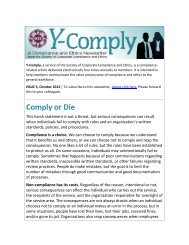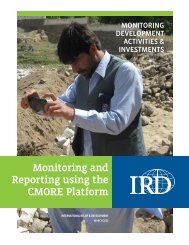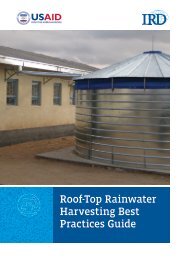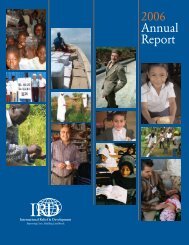Empowering citizens Engaging governments Rebuilding communities
Empowering citizens Engaging governments Rebuilding communities
Empowering citizens Engaging governments Rebuilding communities
Create successful ePaper yourself
Turn your PDF publications into a flip-book with our unique Google optimized e-Paper software.
4<br />
Box 9<br />
Stabilization in Iraq: 20 tactical lessons (continued)<br />
Converting roadblocks into a roadmap<br />
• Reduce security risks to staff in all facets of their jobs: at their home community, on their commute to work, at the<br />
project site, and during field visits. In addition, careful consideration should be given to addressing the mental,<br />
physical, and psychological challenges that can strain staff, diminish morale, and increase turnover.<br />
• Strengthen senior staff and backstop staff. Adding more senior staff positions as projects progress will motivate<br />
staff and minimize turnover. Additionally, future COIN programs must prepare an adequate budget for headquarters<br />
staff and technical assistance of field programs.<br />
Military and PRT partnerships<br />
• Maintain open lines of communication with military leaders and PRTs. Dialogue between city program directors<br />
and the military can increase staff safety and improve project supervision in dangerous areas. Directors should<br />
seek regular extensive briefings to ensure that they have up-to-date intelligence on local social, political, and<br />
tribal shifts.<br />
• Make sure lines of communication are clear, understood, and followed. Program directors should buffer staff<br />
members from direct contact with the military, however well intended. Similarly, PRTs should be made to follow<br />
requirements directing them to work through technical officers to provide direction to implementing partners.<br />
• Encourage PRTs to take a more active review role on projects and site locations when projects are still in the<br />
stabilization phase.<br />
Monitoring and evaluation<br />
• Develop a detailed monitoring and evaluation (M&E) plan as part of the initial application process. In addition, the<br />
implementing agency should collaborate closely with the donor in developing and reporting appropriate performance<br />
indicators.<br />
• Give top priority to hiring and training qualified M&E staff. Ensure that the program has an M&E director with an<br />
appropriate background in conflict situations. All relevant senior management and headquarters staff should be<br />
fully integrated into the M&E system design, and basic training in measurement and analysis processes should<br />
occur at least once a year.<br />
• Build M&E staff capacity to allow both for independent measurement and analysis and for collaborative measurement<br />
with outside contractors.<br />
• Focus on region-specific analyses when possible so project data in specific cities can be shared with program staff<br />
to assess local effectiveness and impact.<br />
• Develop a project system for archiving city-specific documents, as well as all official reports and complementary<br />
data systems, and include this system as part of the basic startup management package in each city program.<br />
The CSP archive, developed by the CSP reporting and information officer, is an example of this lesson in practice.<br />
64


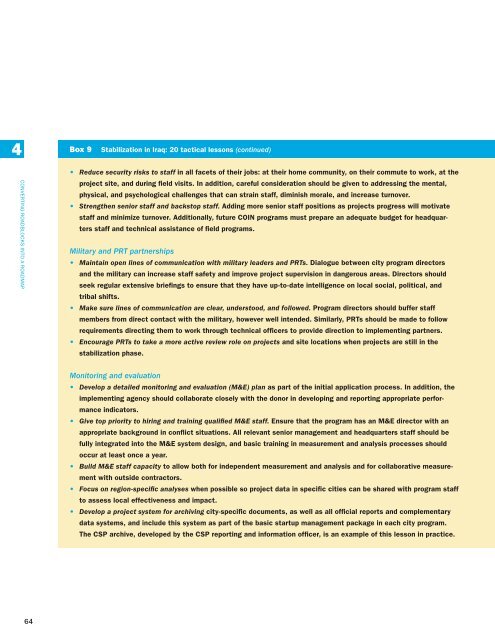
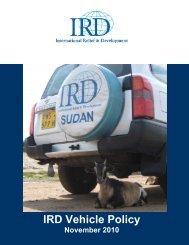
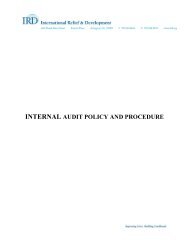
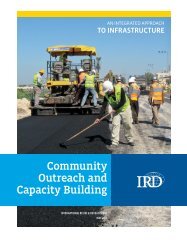
![Guide bonne pratique production d'oignon qualité_VF_4_2411012[1]](https://img.yumpu.com/23506639/1/184x260/guide-bonne-pratique-production-doignon-qualitac-vf-4-24110121.jpg?quality=85)

